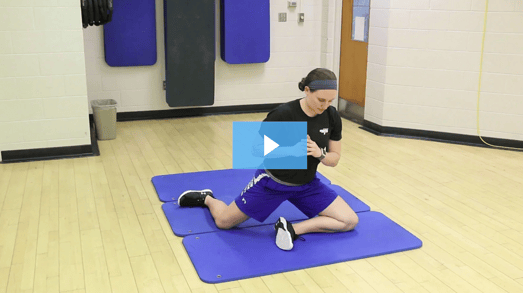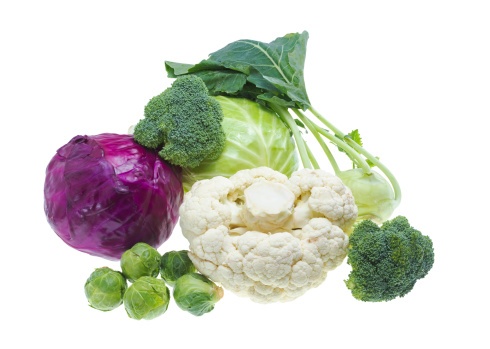With the winter months settling in, and maybe traveling becoming part of your routine, it may become harder to carve out time for workouts. Limited access to equipment may also throw a wrench into your plan for a quick training session. But by incorporating bodyweight movements into a flow circuit, you can bypass the excuses and be workout ready any time, any place.
What Is a Bodyweight Flow?
Flow circuits typically include bodyweight movements that are linked in succession one after another with minimal or no rest in between. They can be used as a dynamic warmup, a low-intensity recovery circuit, or an entire workout in and of itself. They can also be a great way to sprinkle some physical activity into your day, especially if time and equipment are lacking.
How to Implement a Flow Circuit
If you’re looking to spice up your standard dynamic warm-up (or add one in general), a simple two-minute flow circuit fits perfectly. You can perform each movement three to five times, and when the movements are linked together in succession, they help increase blood flow, improve mobility, and increase your overall core body temperature to prep you for the workout ahead. Bodyweight flow circuits also allow you to hit large, compound movements that address stability at multiple joints in a shorter amount of time. Overall, they are a great bang for your buck. Examples of movements include bear crawls, cross-under lunges, inchworms, and rocking patterns.
Here are a couple of bodyweight flow options that you can take for a spin next time you’re at the gym in need of a warm-up.
- Video 1 (Hip Flow Series)
- Video 2 (Crawling/Rolling Patterns)
If you’re interested in learning more about how to use bodyweight movements and flows for warm-ups, circuits, cool-downs, or recovery routines, check us out down in the Fitness Center. You can also reach out to me via email to lzakrajsek@nifs.org for any and all questions. Happy lifting!
This blog was written by Lauren Zakrajsek, NIFS Health Fitness Instructor, Personal Trainer, and Internship Coordinator. To learn more about the NIFS bloggers, click here.




 Do you feel like you get stuck in a rut eating the same things from week to week? On one hand it makes life a lot easier, right? You don’t have to scour through recipes, find that one illusive ingredient on the top shelf in the last aisle you looked in, or put the effort into prepping a meal that claims “30-minute prep” but in fact took you two hours. I completely understand!
Do you feel like you get stuck in a rut eating the same things from week to week? On one hand it makes life a lot easier, right? You don’t have to scour through recipes, find that one illusive ingredient on the top shelf in the last aisle you looked in, or put the effort into prepping a meal that claims “30-minute prep” but in fact took you two hours. I completely understand! I’m sure you have seen or read about celebrities doing detox diets and cleanses before awards shows. Maybe you have thought about trying one of these crazy and wacky things yourself. Most of these diets are very low-calorie and can be dangerous if followed for an extended period of time.
I’m sure you have seen or read about celebrities doing detox diets and cleanses before awards shows. Maybe you have thought about trying one of these crazy and wacky things yourself. Most of these diets are very low-calorie and can be dangerous if followed for an extended period of time.  Cruciferous veggies like cabbage and Brussels sprouts: Due to the high amounts of fiber in these veggies, they help with gut health, kidney health, and liver health by keeping the body regular and removing toxins and waste. These foods also contain the phytochemical
Cruciferous veggies like cabbage and Brussels sprouts: Due to the high amounts of fiber in these veggies, they help with gut health, kidney health, and liver health by keeping the body regular and removing toxins and waste. These foods also contain the phytochemical  Green tea: Drinking liquids is always a wonderful and natural detox, and adding green tea to your water is extra helpful. It is high in catechin, a flavonoid, which speeds up liver activity and increases the
Green tea: Drinking liquids is always a wonderful and natural detox, and adding green tea to your water is extra helpful. It is high in catechin, a flavonoid, which speeds up liver activity and increases the 
 Les Mills® BODYPUMP™
Les Mills® BODYPUMP™
 There is no debate that it’s easier to make healthier choices and lose weight in the spring and summer months. The sun is shining and warm, the days are longer, and you feel motivated to get outdoors and be active. But when the cold, harsh months of winter come around, all motivation goes out the window. Let’s take a look at ways to keep your motivation high and get over those hurdles of temptation.
There is no debate that it’s easier to make healthier choices and lose weight in the spring and summer months. The sun is shining and warm, the days are longer, and you feel motivated to get outdoors and be active. But when the cold, harsh months of winter come around, all motivation goes out the window. Let’s take a look at ways to keep your motivation high and get over those hurdles of temptation. In my last blog,
In my last blog,  In a world where in many cases bigger is better, just because something is small doesn’t mean it’s less important or can’t have big impact. Being short in stature my entire life, it has always been my motto that “dynamite comes in small packages,” and I have strived to create as much BANG as I can in all facets of life. Small in stature can provide big results when you light the proper fuse and utilize its power maximally.
In a world where in many cases bigger is better, just because something is small doesn’t mean it’s less important or can’t have big impact. Being short in stature my entire life, it has always been my motto that “dynamite comes in small packages,” and I have strived to create as much BANG as I can in all facets of life. Small in stature can provide big results when you light the proper fuse and utilize its power maximally.
 A common nuisance to almost all fitness enthusiasts is the overall lethargic feeling you get from being extremely sore due to a challenging workout. Sometimes this is a deterrent to those looking to develop a consistent workout pattern, and can be especially bothersome if you haven't experienced this phenomenon before.
A common nuisance to almost all fitness enthusiasts is the overall lethargic feeling you get from being extremely sore due to a challenging workout. Sometimes this is a deterrent to those looking to develop a consistent workout pattern, and can be especially bothersome if you haven't experienced this phenomenon before.